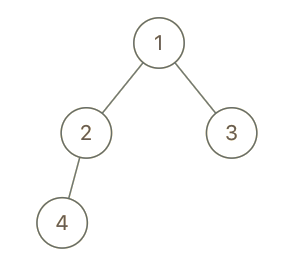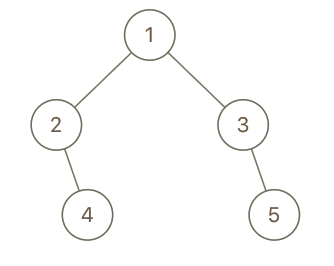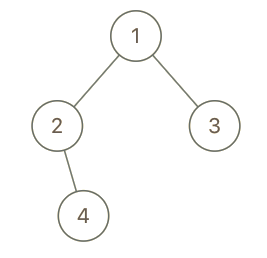
Problem
Given the root of a binary tree with unique values and the values of two different nodes of the tree x and y, return true if the nodes corresponding to the values x and y in the tree are cousins, or false otherwise.
Two nodes of a binary tree are cousins if they have the same depth with different parents.
Note that in a binary tree, the root node is at the depth 0, and children of each depth k node are at the depth k + 1.
Example 1:
Input: root = [1,2,3,4], x = 4, y = 3 Output: falseExample 2:
Input: root = [1,2,3,null,4,null,5], x = 5, y = 4 Output: trueExample 3:
Input: root = [1,2,3,null,4], x = 2, y = 3 Output: false
Constraints:
・ The number of nodes in the tree is in the range [2, 100]. ・ 1 <= Node.val <= 100 ・ Each node has a unique value. ・ x != y ・ x and y are exist in the tree.
Idea
Binary Tree의 두 노드를 주고 노드의 관계가 cousin인지 확인하는 문제다. Cousin은 부모가 서로 다르고 depth가 같은 노드를 말한다. Depth가 같고 부모가 같으면 sibling 노드라 해야 맞을 것이다.
두 노드의 depth를 저장하는 것이 번거로워 class의 멤버 변수를 활용했다. 또한 부모 노드가 같은지도 확인하기 위해 변수를 추가했다. Tree 탐색은 recursive 함수를 이용했으며, 해당 노드의 값이 x 또는 y와 같다면 노드의 depth와 부모의 값을 기록해 둔다. 무의미한 탐색을 끝내기 위해 depth가 모두 설정이 되었으면 재귀함수를 끝낸다.
Binary Tree 탐색이 끝났으면 두 노드의 depth와 두 노드의 부모 값을 비교해 결과를 리턴한다.
Solution
class Solution { int depthX = 0; int depthY = 0; int parentX = 0; int parentY = 0; public boolean isCousins(TreeNode root, int x, int y) { traverseTree(root, x, y, root.val, 0); return depthX == depthY && parentX != parentY; } private void traverseTree(TreeNode node, int x, int y, int parent, int depth) { if (node == null) return; if (node.val == x) { depthX = depth; parentX = parent; } else if (node.val == y) { depthY = depth; parentY = parent; } if (depthX != 0 && depthY != 0) return; traverseTree(node.left, x, y, node.val, depth+1); traverseTree(node.right, x, y, node.val, depth+1); } }



